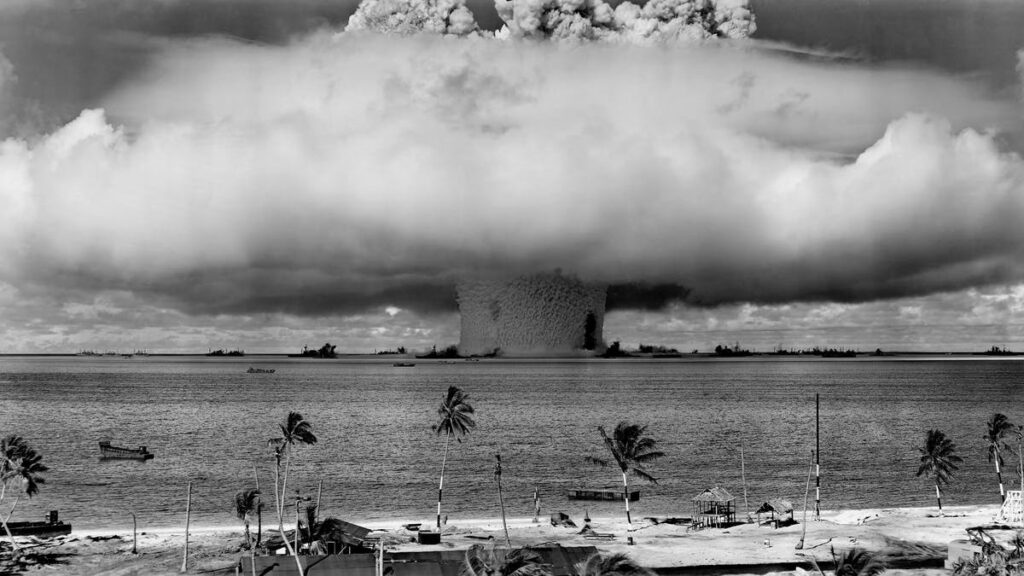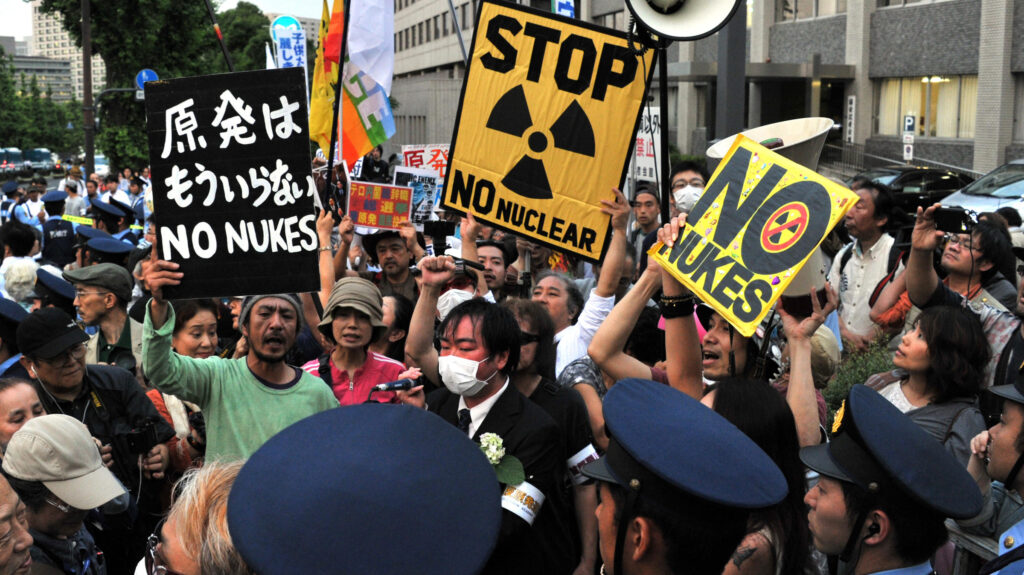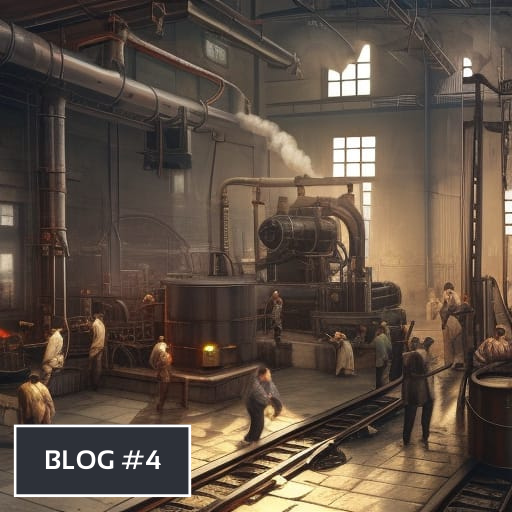Introduction
In last week’s episode there was a clear emphasis on the need to take action to make autonomous vehicles a positive force in cities. It is not a determined fact that autonomous vehicles will benefit a city, but rather it depends on how they are implemented and used.
This is a very relevant idea that has been brought up in previous discussions, but I haven’t taken the opportunity to look into this further. So today’s episode will focus on how both technology does not follow a deterministic path, and that human choice is fundamental to how technologies are adopted. I’ll use my favourite historical story of the “lost” nuclear Thorium energy technology which I hope will make these ideas clear. The tech being focused on isn’t directly an automation technology, but I hope that the story is provocative enough to make you reconsider some of the podcast discussions if there was a hint of there being an inevitable path a certain technology was on. Overall, What I hope to demonstrate is that nuclear technology did not develop along a determined linear path but was rather strongly influenced by certain institutions, people, and mentalities. But perhaps you’ve never heard of Thorium, so let’s start by looking at what it actually is.

Thorium vs Traditional Nuclear
The best way to do this is by simply contrasting the thorium reactors to those utilized across the planet. Nuclear power plants across the globe use uranium as their main fuel (Patel 2014). Although the technical details are well beyond the scope of this episode, the basic premise is that immensely pressurized water is used to cool solid uranium fuel contained within rods. Due to the strong radiation and pressures, the fuel rods themselves become physically worn, necessitating replacement after only around 5% of the energy of the uranium has been used (Patel 2014). These spent rods contain one of the main elements needed to make nuclear weapons, Plutonium-239 as well as many other radioactive elements which we typically deem ‘nuclear waste.’ This waste is both harmful to carbon based life and persists for thousands of years.
Unlike uranium, Thorium is up to four times more abundant and it does not require extensive and environmentally destructive mining practices to extract (Patel 2014). As it has different elemental properties from uranium, it does not require high pressured water for cooling, thus enabling the reduction of the size and cost of a power plant, and making a meltdown scenario practically impossible (Schaffer 2013). It also cannot start a nuclear reaction. A ‘driver fuel,’ like uranium catalyses the reaction, but even after the fuel cycle is complete the same uranium can be reused multiple times thus producing two orders of magnitude less waste while increasing the efficiency of the fuel (Patel 2014).
However, the greatest benefits are that the nuclear waste is extremely difficult to use in weapon creation, and the half-life of the spent fuel is only a few hundred years, in contrast with tens or hundreds of thousands of years with uranium (Schaffer 2013). Given that thorium would be vastly preferred to our inefficient and heavily polluting uranium reactors, with its efficient energy production capabilities, limited waste creation, and difficulty in proliferating weapons, why aren’t all nuclear reactors based on thorium? The answer is found in how nuclear technology was framed in its early days.

Nuclear Super Weapons
Up to 1948, there were attempts at global control of atomic weapons proliferation as the US was the only country to possess nuclear technology (Goldschidt 1982). Up to this point, even many of the scientists from the Manhattan Project were promoting a simple and small upgrade of the current nuclear weapons and to focus nuclear research efforts in other areas, like energy production, while others were pushing for a ‘super-weapon’ or hydrogen bomb, which would yield an explosive force many orders of magnitude greater than the weapons used on Japan (Goldschidt 1982). There were two primary groups holding opposite views of nuclear technology. A group of scientists led by J. Robert Oppenheimer, saw the development of a super weapon as technically improbable and overly expensive, requiring nuclear reactors to generate weapons grade materials (Goldschidt 1982). The supporters of the bomb were led by another physicist, Edward Teller, while senators and chairmen of the Joint committee on Atomic Energy (JCAE) were within the supporters ranks.
Due to the disarmament talks breaking down in 1948, and the Soviet military detonating its first atomic weapon in 1949, everything changed (Goldschidt 1982). The supporters were able to use the fear mongering with ideas like being overtaken by the Soviet Union, to convince influential politicians and ultimately President Truman to develop the hydrogen bomb. Governments, militaries, national media, and the US Atomic Energy Commission (AEC), began to see nuclear reactors as machines that could churn out the ingredients necessary to produce nuclear weapons with which to protect their nations from a new potential threat (Goldschidt 1982).
Thus, without this story being told, it would appear that the scientific advancements simply led to the hydrogen bomb development and uranium reactors. But the reality is that with the acceptance of the super weapon development programme, nuclear energy reactors were to be regarded as weapon production plants first and energy production plants second (Goldschidt 1982).
Thorium Research Beginning and End
However, apart from bombs, propulsion for both ships and aircraft was also considered (Goldschidt 1982). The Oak Ridge National Laboratory, where research on nuclear aircraft propulsion was taking place, built a successful Thorium test reactor in 1965 using different fuel systems than the typical uranium reactors (Sorensen 2006). It operated for 4.5 years and proved the many benefits described earlier of a thorium reactor compared to a uranium one (Sorensen 2006). Alvin Weinberg (head of the Oak Ridge lab), and his team believed an efficient, safe, and proliferation proof reactor could produce reliable energy,
The AEC and US military were still in favour of nuclear technology research and production focusing on plutonium producing reactors. As such they would only see the reactor as a technology that was unable to produce the valuable plutonium needed for atomic weapon production. Though Weinberg sent out constant proposals to make the current reactors safer by applying the Oak Ridge technology to them, his ideas did not fit the dominant frame and would ultimately cost him his job and the project (Sorensen 2006).
In 1969, after the successful test period, the reactor was shut down, and the project was ultimately cancelled in 1972 by the AEC (Sorensen 2006). This was the final event that cemented one type of nuclear reactor as the dominant technology to continue forward in time. There were no more stakeholders in positions of power to push for the thorium based designs.

Anti-Nuclear Activism And The End Of Thorium
Taking all this into consideration, the thorium reactor’s development was stopped due to social forces rather than technical limitations. In fact, viewing the nuclear industry with a contemporary lens, thorium reactors could be argued to be the technological determinist outcome of a society that has high energy requirements if the knowledge and capability of building thorium reactors were to re-emerge. However, there is one final point that should secure the idea of how important a social environment is to technological adoption.
Once the cold war subsided nuclear technology was no longer predominantly seen as a weapon, but rather as a viable means for energy production. This shift would have been the perfect time to introduce thorium based nuclear energy, as the cleaner, safer, more efficient alternative. However, this was sadly not to be the case.
The nuclear resistance movement began as soon as the world was introduced to nuclear power. On August 6th 1945, the city center of Hiroshima and roughly 100,000 of its inhabitants would be erased from the face of the earth (Wright 2006). This and other incidents such as the poisoning of the Happy Dragon, a Japanese fishing ship caught in the fallout of a nuclear test, would add to the growing psychologically based aversion towards nuclear technology. Through the actions of spokesmen like Ralph Nader, Greenpeace, and the American media, ideas and sentiments changed to being against nuclear technology. The very first outright rejection of nuclear power came from residents in San Francisco against a proposed power plant on the San Andreas fault line in the 1960’s (Goldschidt 1982). Although this allowed a case from which to base future protests against local power plant projects, it was Ralph Nader who, as champion of consumer interests, gave a national voice against all nuclear technology due to the health risks involved. (Goldschidt 1982). Due to the success of protests against the Vietnam War, activists attaching themselves to the anti-nuclear agenda were able to use legal means to slow and cripple many construction efforts based on the rhetoric of the imposed risk that nuclear technology had on consumers
All of these different groups culminated in the 1979 three mile island incident where a manageable issue in a nuclear reactor was reported by the media as being a near catastrophic meltdown adding to boiling emotional resentment towards the nuclear program (Goldschidt, 1982). The effect was that from 1975 onwards no new nuclear stations were to be built in the USA (Goldschidt, 1982), and any dream of implementing thorium reactors were quickly dispelled. Therefore thorium reactors were pushed out from two different angles. Both their inability to support the needed nuclear weapon production, as well as the total societal rejection of nuclear technology by the civilian population.
Conclusion
Hopefully it has become clear that different groups holding contrary ideas about what nuclear technology means used their power and influence to make their idea a reality. In every case, thorium based nuclear power lost as a dominant concept and was removed from history’s story. We saw how the cold war stakeholders like the AEC framed nuclear technology, and specifically nuclear power plants as plutonium producers with a side effect of producing energy. This idea was finalised when President Truman went forward with the development of the hydrogen bomb super weapon.
With this dominant social frame in play, Oak Ridge National laboratory and their successful thorium reactor program closed down in favour of energy reactors with incredibly inefficient energy production. We also saw how the anti-nuclear movement created a fervour around keeping nuclear research and reactors at bay which kept the thorium reactors offline for the subsequent decades, even when the opportunity to change away from the old uranium nuclear plants was opened up.
Once again, the goal of this specific episode was to elaborate on the idea that technological development and adoption is not entirely deterministic. Multiple social forces play an enormous role in which technologies will be the ones used in the future. Hopefully, these ideas should be relevant for the future conversations this podcast will engage in as well as preferably give you, the audience an idea that your own agency is important in how our technological future is realised.

Sources
Prachi Patel (2014). India’s thorium based nuclear vision. Energy Quarterly. Vol 39.
Sorensen, Kirk. (2006). A brief history of the liquid-fluoride reactor. Energy from thorium. Retrieved from: http://energyfromthorium.com/2006/04/22/a-brief-history-of-the-liquid-fluoride-reactor/
Marvin Baker Schaffer. (2013) Abundant thorium as an alternative nuclear fuel: Important waste disposal and weapon proliferation advantages. Energy Policy, Vol 60.
Goldschmidt, Bertrand (1982) The atomic complex: a worldwide political history of nuclear energy. La Grange Park, Ill.










